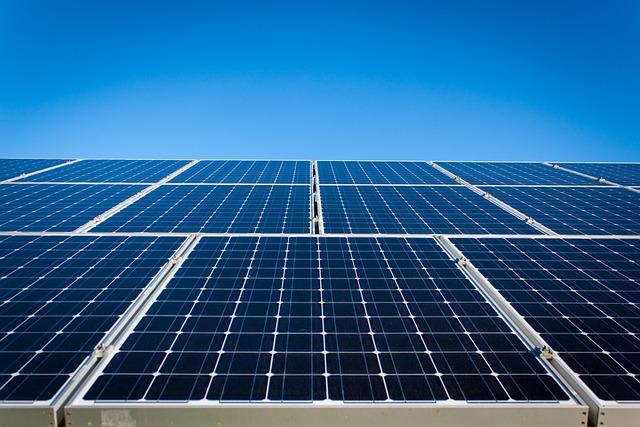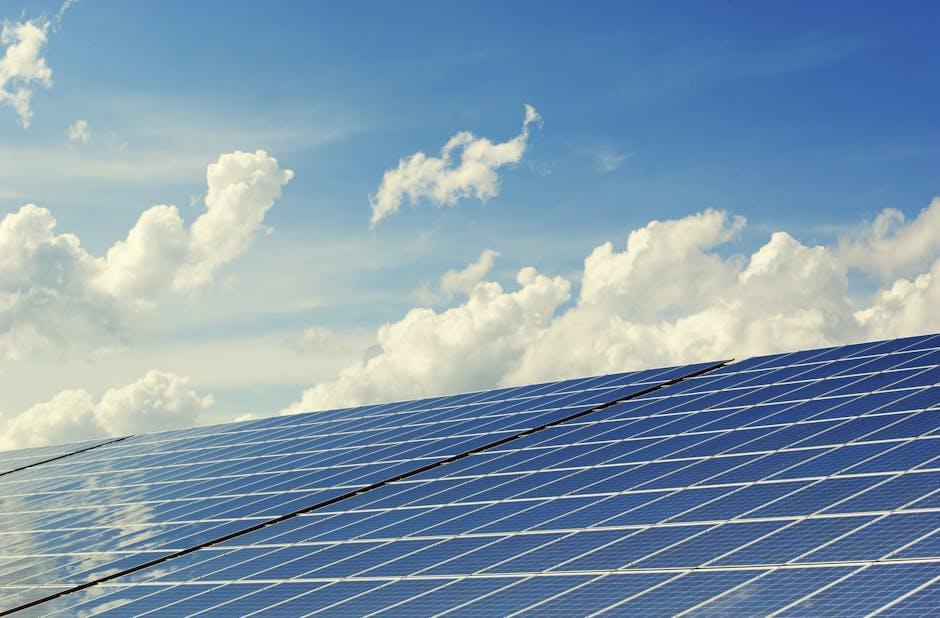In a world increasingly driven by the quest for sustainable energy, solar power has emerged as a beacon of hope, promising to transform our homes into self-sufficient energy hubs. Yet, as the sun rises on a new era of residential energy solutions, questions linger in the shadows. Is solar power truly the panacea it is often portrayed to be, or have its capabilities been oversold to eager homeowners? This article delves into the heart of this debate, exploring whether the radiant promise of solar energy can genuinely illuminate the path to sustainable living, or if it casts a longer shadow of unmet expectations. Through an unbiased lens, we will examine the realities of solar power’s potential to meet residential needs, balancing optimism with pragmatism in the ever-evolving landscape of renewable energy.
Challenges and Realities of Residential Solar Adoption
The transition to residential solar power is laden with a myriad of challenges that homeowners must navigate. One of the most significant hurdles is the initial cost. Although solar panels have become more affordable over the years, the upfront investment can still be daunting. Many homeowners find themselves grappling with financing options, tax incentives, and potential savings, which can be complex and vary significantly by region. Moreover, not all homes are suitable for solar installation due to factors like roof orientation, shading from trees or buildings, and local climate conditions.
Beyond financial and logistical barriers, there are maintenance realities that must be considered. While solar panels are relatively low-maintenance, they are not entirely set-and-forget. Homeowners need to account for periodic cleaning to ensure efficiency, potential repairs, and the eventual replacement of inverters. There’s also the grid dependency factor. Many systems are designed to work in conjunction with the existing electrical grid, meaning a blackout could still affect homes with solar installations unless a battery storage solution is integrated, which adds another layer of complexity and cost.
- Initial Costs: High upfront investment despite long-term savings.
- Home Suitability: Factors like roof orientation and shading impact viability.
- Maintenance Needs: Regular cleaning and potential repairs.
- Grid Dependency: Battery storage needed for true independence.

Understanding the True Cost-Benefit Equation for Homeowners
When contemplating the transition to solar energy for your home, it’s crucial to examine both the costs and benefits in a comprehensive manner. While solar power promises significant reductions in electricity bills and a smaller carbon footprint, the upfront costs can be substantial. Consider these key elements:
- Installation Costs: The initial expense of purchasing and installing solar panels can be hefty, often ranging from $15,000 to $25,000 before incentives. While government rebates and tax credits can alleviate some of this financial burden, the final cost still represents a significant investment.
- Maintenance and Lifespan: Although solar panels are generally low maintenance, occasional cleaning and potential repairs must be factored into the overall equation. Panels typically come with a lifespan of 25-30 years, but efficiency may decrease over time.
- Energy Savings: The potential savings on electricity bills depend on various factors, including local energy rates and sunlight availability. Homeowners in sunnier regions may see a quicker return on investment.
- Property Value: Installing solar panels can increase a home’s market value, but this may vary depending on the local real estate market and potential buyers’ interest in sustainable living solutions.
Ultimately, the decision to invest in solar power should be based on a thorough evaluation of these factors, tailored to your specific circumstances and energy needs. Understanding the full scope of the cost-benefit equation is essential to making an informed choice that aligns with your financial and environmental goals.

Exploring Technological Innovations and Their Impact on Efficiency
In recent years, the push towards renewable energy sources has spotlighted solar power as a promising solution for residential energy needs. Yet, as homeowners consider the transition, it’s essential to scrutinize the claims of its efficiency and practicality. Solar power offers several compelling benefits:
- Reduced Electricity Bills: By harnessing sunlight, households can significantly cut down on monthly expenses.
- Environmental Impact: Solar energy reduces reliance on fossil fuels, contributing to a decrease in carbon emissions.
- Energy Independence: Homeowners gain more control over their energy sources, lessening vulnerability to utility rate hikes.
However, it’s equally important to consider the potential drawbacks that may not always be highlighted in optimistic narratives:
- Initial Costs: The upfront investment for installation and equipment can be substantial, often requiring years to recoup through savings.
- Weather Dependence: Efficiency can be heavily impacted by geographic location and climate, with less sunny areas seeing diminished returns.
- Maintenance and Longevity: While relatively low, maintenance costs and the eventual need for panel replacement can affect long-term savings.
While solar power presents a promising avenue for sustainable energy, potential adopters must weigh these factors to determine its true viability for their specific needs.

Strategic Recommendations for Maximizing Solar Potential at Home
To harness the full potential of solar energy at home, homeowners should consider a blend of strategic planning and smart technology integration. Begin by conducting a comprehensive energy audit to understand your household’s unique consumption patterns. This will help tailor a solar setup that aligns with your energy needs. Optimize your roof space by ensuring it’s free from shade and structurally sound for panel installation. Explore the possibility of installing high-efficiency solar panels to maximize energy capture, especially if space is limited.
Furthermore, consider integrating a solar battery storage system to store excess energy generated during sunny periods. This stored energy can be used during peak demand times or at night, providing a seamless power supply and reducing reliance on the grid. Incorporate smart home technologies that monitor and manage energy usage, allowing you to adjust consumption patterns in real-time. By staying informed about government incentives and rebates, you can significantly offset installation costs, making solar adoption more financially viable. By implementing these strategies, you can fully capitalize on solar energy’s potential, transforming your home into a sustainable energy powerhouse.
Key Takeaways
As the sun dips below the horizon, casting a warm, golden glow over the rooftops of homes worldwide, the debate over solar power’s promise for residential needs remains as vibrant as the colors of dusk. Solar energy, with its allure of sustainability and independence, beckons us toward a future where the power of the sun is harnessed seamlessly in our daily lives. Yet, as with any evolving technology, it comes with its own set of shadows and nuances that must be carefully navigated.
The conversation around solar power is not merely about kilowatts and panels; it’s about the broader tapestry of human aspiration, environmental stewardship, and technological innovation. As we stand at this crossroads, it becomes essential to balance optimism with realism, ensuring that our expectations align with what is technologically and economically feasible.
whether solar power is overpromised or underutilized may not be the crux of the matter. Instead, the journey lies in how we adapt, innovate, and ultimately integrate this radiant resource into the mosaic of modern living. As the dialogue continues, one thing remains certain: the potential of solar power is as boundless as the sky, waiting to be harnessed by those willing to illuminate the path forward.

































